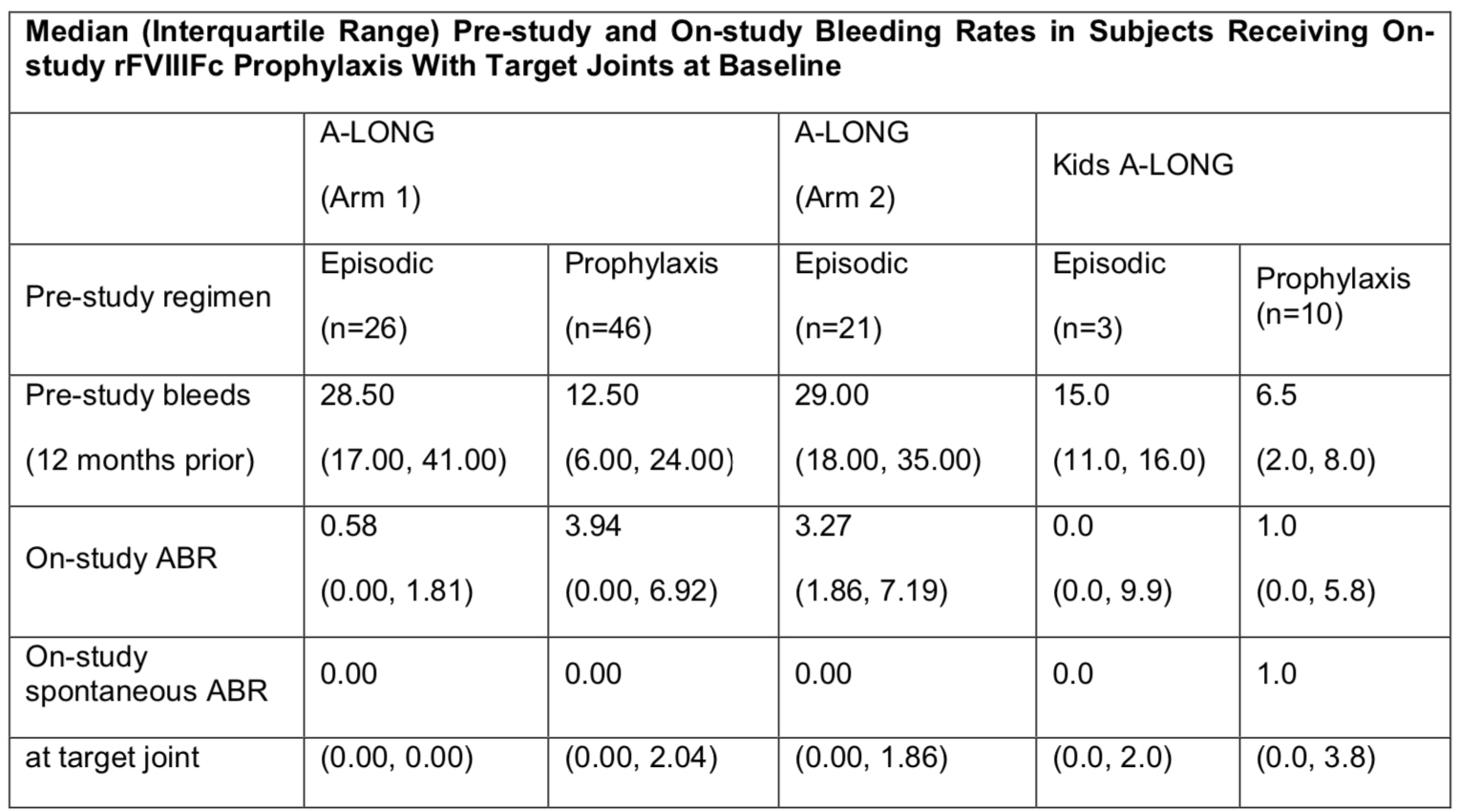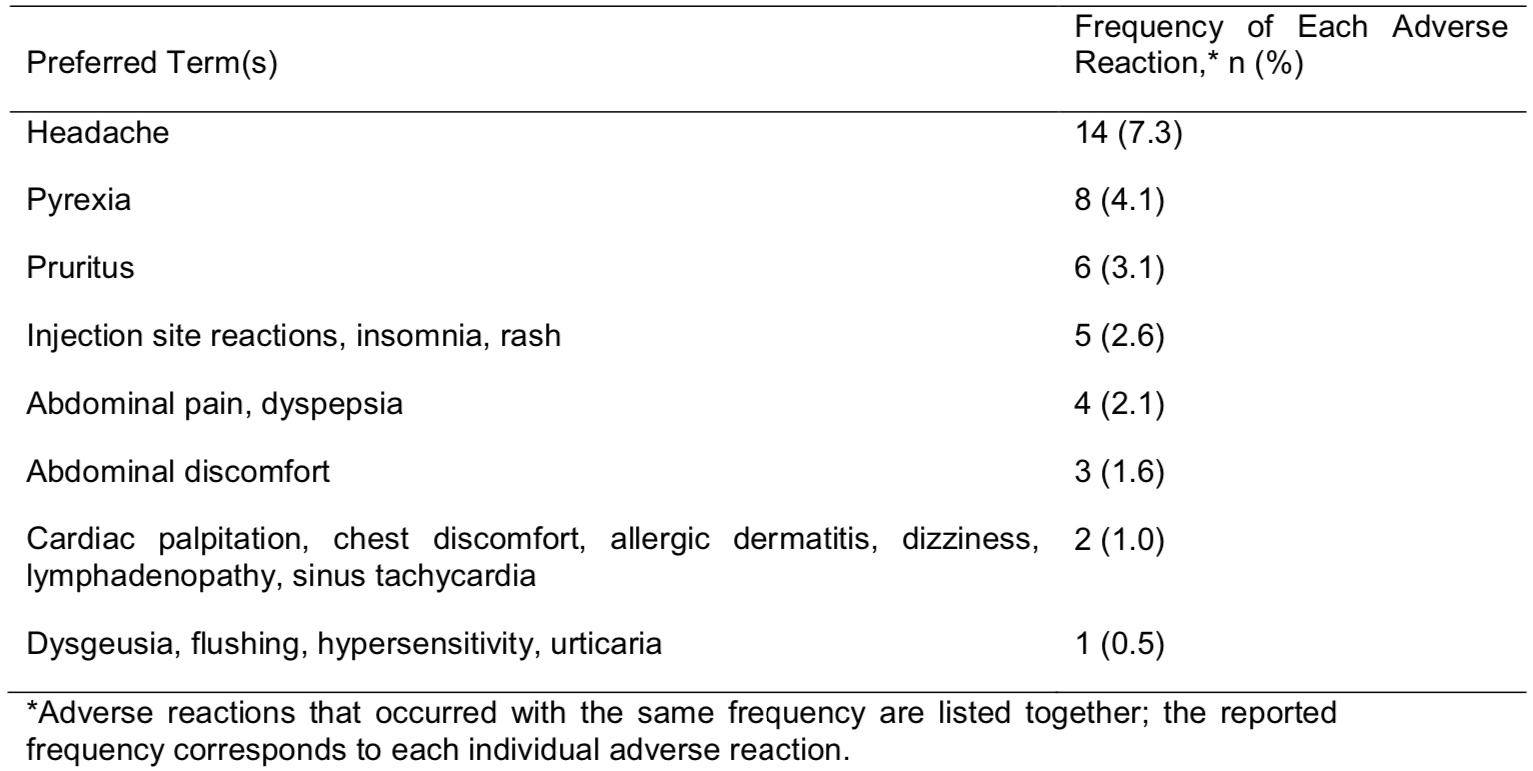Description and Management of Pain and Functional Impairment in US Adults With Hemophilia: Initial Observations From the Pain, Functional Impairment, and Quality of Life (P-FiQ) Study
Objective:
Hemophilia is marked by frequent joint bleeding, resulting in acute and chronic pain and functional impairment. Surveys in US adults with hemophilia demonstrate suboptimal pain management and quality of life (QoL). The objective of P-FiQ was to methodologically assess QoL parameters, including functional impairment and pain, and pain management strategies.
Methods:
Adult men with mild-severe hemophilia with a history of joint pain and/or bleeding completed a hemophilia/pain history and various patient-reported outcome assessments (completed twice in “retest” population of initially enrolled patients).
Summary:
Of 164 adults with hemophilia (median age 34) in the “retest” population, more had hemophilia A (74%) than B (26%); 6% had inhibitors. Most had some college-or-above education (63%), 81% were employed, 61% were overweight/obese, and 61% self-reported arthritis/bone/joint problems. Current patient-reported treatment regimens were prophylaxis (42%), on-demand (39%), or mostly on-demand (19%; 25/31 using infusions ahead of activity). One-third (32.9%) reported unrestricted school/work/recreational activities in the prior 6 months; 6.2% reported needing assistance for school/work/self-care, or did not participate in recreational activities because of pain, loss of motion, and weakness. Some patients (31.3%) reported using a cane/crutches/walker (3.8% always) and 7.6% a wheelchair (1.3% always), and 47.0% reported a history of joint surgery (41 knee, 37 ankle, 29 elbow). Patients reported losing an average of 3.7 and 1.8 school/work days in the previous 6 months due to lower and upper extremity problems, respectively. Patients reported that during the prior 6 months they had experienced acute pain only (24%), chronic pain only (33%), or both (29%); 15% reported no pain. Acute pain was most frequently described as sharp (77%), aching (66%), shooting (57%), and throbbing (55%), and chronic pain as aching (74%), nagging (49%), throbbing (44%), and sharp (40%). Most common analgesics in the past 6 months for acute/chronic pain were acetaminophen (69%/58%), NSAIDs (40%/52%), hydrocodone-acetaminophen (29%/33%), oxycodone (12%/11%), and oxycodone- acetaminophen (9%/8%). Most common nonanalgesic treatment strategies reported for acute/chronic pain in the past 6 months were ice (73%/37%), rest (48%/34%), factor or bypassing agent (48%/24%), elevation (34%/28%), relaxation (31%/23%), compression (27%/21%), and heat (25%/15%); other reported strategies include medical marijuana (17%/9%), physical therapy (12%/9%), prayer (11%/8%), faith (9%/8%), alcohol (8%/7%), aquatherapy (5%/6%), illicit drugs (4%/2%), acupuncture (2%/1%), hypnosis (2%/1%), and biofeedback (1%/1%).
Conclusions:
Initial data corroborate the high prevalence of pain and functional disability in adults with hemophilia and highlight opportunities to address clinical assessment, patient dialogue, and management strategies to improve outcomes.



